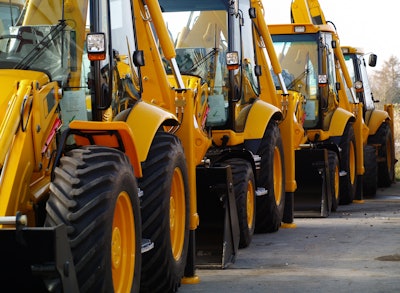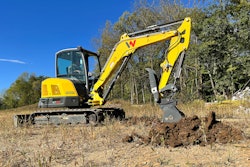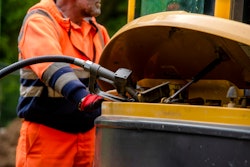
Forecasting U.S. businesses to spend more than $2 trillion on equipment and software in 2023, the Equipment Leasing and Finance Association (ELFA) has released its Top 10 Equipment Acquisition Trends.
The organization, which represents the nearly $1 trillion equipment finance sector, says contractors and dealers can use these trends to better understand the market environment as they make plans to buy and sell equipment.
“Slower economic growth underlies the trends this year as equipment acquisition continues to drive supply chains across all U.S. manufacturing and service sectors,” ELFA President and CEO Ralph Petta said. “Nearly eight in 10 U.S. businesses currently use equipment leasing and financing to acquire the productive assets they need to operate and grow.”
After distilling recent research, data and member input, ELFA anticipates the following equipment leasing and financing trends for 2023:
The U.S. economy will experience sluggish growth in 2023. U.S. GDP growth bounced back during the second half of 2022, but underlying conditions remain troubling, including a struggling housing market, volatile financial markets and the slowing global economy. With a mild recession expected to begin midway through the year, U.S. GDP growth is forecast at 0.9% (annualized) for 2023.
The pace of growth in capital spending will continue to slow. A surge of 12% annualized growth in capital spending in Q3 2022 provided a solid jumping-off point for 2023. While growth in equipment and software investment has been steady since the onset of the pandemic, rising interest rates, high inflation and other economic uncertainties are expected to weigh on investment with 4.2% growth forecast for this year.
Financial conditions will tighten regardless of interest rate hikes. Interest rate levels are expected to rise above 5% this year as the Fed continues to battle inflation despite the risk of an economic downturn. Even if rate increases slow down or pause later in the year, the Fed’s shrinking balance sheet will contribute to tighter financial conditions.
The majority of equipment acquisitions will be financed. In 2023, more than half (55%) of equipment acquisitions are forecast to be financed. Eight of 10 businesses use leases, secured loans or lines of credit for their acquisitions. Protection from equipment obsolescence, tax advantages and cash flow optimization will be the top drivers for end-users to finance.
Businesses will use equipment and software investment to offset labor costs. To reduce dependence on labor, businesses in some industries will increase their use of automation and other labor-saving equipment. Additional benefits will be increased economic productivity and downward pressure on inflation in the long term.
Normal supply-chain backlogs will ease equipment acquisitions. By most measures, supply-chain backlogs have returned to their historical averages and will ease equipment delivery delays or shortages this year. A combination of cooling demand and an improving public health situation have given suppliers a chance to catch up. In addition, global supply-chain disruptions have triggered a paradigm shift with many large organizations “near-shoring” and/or “re-shoring” elements of their supply chains.
Many equipment types will thrive amid a slow-growth economy. Despite a souring economic backdrop, the residual effects of the pandemic will spur demand for certain equipment types. Post-pandemic hybrid work arrangements will require acquisitions of equipment types such as computers, software, office equipment and communications equipment. Aircraft investment will boom early in the year as supply chains unwind and travelers return to the skies. Medical equipment appears to be another stand-out vertical for 2023.
Federal spending will provide a boost to equipment investment. Three major bills passed in Congress authorize at least $600 billion in new funding for a variety of industrial and infrastructure projects and should provide a sharp boost to equipment investment. Funding from these bills will be distributed over the next five years and should help backstop the U.S. manufacturing sector and increase the demand for equipment in 2023 and beyond.
Explosive growth in green projects will drive demand for “climate financing.” Organizations are committed to cutting their production and emissions of greenhouse gases and require equipment from wind turbines and solar energy systems to microgrids, storage facilities for lithium-iron and hydrogen batteries, electric vehicles and more. Globally, an estimated $18 trillion of climate-focused equipment is forecast to be financed between now and 2030.
“Wild cards” will factor into business investment decisions. Businesses will keep an eye on other areas that could impact their equipment acquisition strategies in addition to the trends above. Tightening credit, a potential debt-ceiling showdown in Congress and energy price increases due to Russia’s war on Ukraine are among potential business impacts.
 Equipment Leasing and Finance Association
Equipment Leasing and Finance Association












